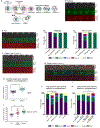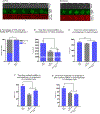The DNA Damage Checkpoint and the Spindle Position Checkpoint Maintain Meiotic Commitment in Saccharomyces cerevisiae
- PMID: 30686741
- PMCID: PMC6363850
- DOI: 10.1016/j.cub.2018.12.043
The DNA Damage Checkpoint and the Spindle Position Checkpoint Maintain Meiotic Commitment in Saccharomyces cerevisiae
Abstract
During meiosis, diploid progenitor cells undergo one round of DNA replication followed by two rounds of chromosome segregation to form haploid gametes. Once cells initiate the meiotic divisions, it is imperative that they finish meiosis. A failure to maintain meiosis can result in highly aberrant polyploid cells, which could lead to oncogenesis in the germline. How cells stay committed to finishing meiosis, even in the presence of a mitosis-inducing signal, is poorly understood. We addressed this question in budding yeast, in which cells enter meiosis when starved. If nutrient-rich medium is added before a defined commitment point in mid-prometaphase I, they can return to mitosis. Cells in stages beyond the commitment point will finish meiosis, even with nutrient addition. Because checkpoints are signaling pathways known to couple cell-cycle processes with one another, we asked if checkpoints could ensure meiotic commitment. We find that two checkpoints with well-defined functions in mitosis, the DNA damage checkpoint and the spindle position checkpoint, have crucial roles in meiotic commitment. With nutrient-rich medium addition at stages beyond the commitment point, cells that are deficient in both checkpoints because they lack Rad53 and either Bub2, Bfa1, or Kin4 can return to mitotic growth and go on to form polyploid cells. The results demonstrate that the two checkpoints prevent cells from exiting meiosis in the presence of a mitosis-inducing signal. This study reveals a previously unknown function for the DNA damage checkpoint and the spindle position checkpoint in maintaining meiotic commitment.
Copyright © 2018 Elsevier Ltd. All rights reserved.
Conflict of interest statement
Declaration of Interests
The authors do not have any competing interests to declare.
Figures






References
Publication types
MeSH terms
Grants and funding
LinkOut - more resources
Full Text Sources
Other Literature Sources
Molecular Biology Databases

